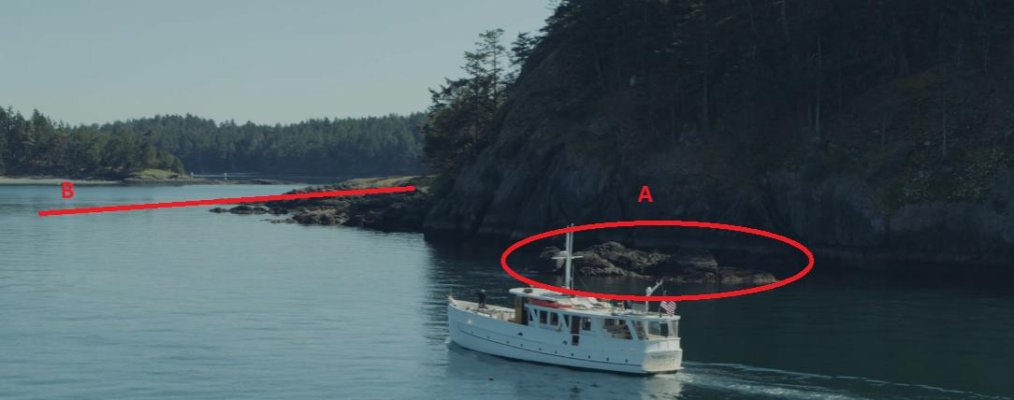Offering a few pointers for new boaters to consider has they read through this tragic account. This seems like a situation where everybody loses and there are no winners. Some of my points may help some of the folks with less sea time under their belts.
1. Just because you have the latest a greatest electronic device to display chart data doesn't mean the chart data is the latest and greatest.
2. Charts are not perfect, every rock or part of a reef may not be charted. If a group of rocks is shown expect other uncharted rocks close by like 25-100feet.
3. Charts in some developing countries may be based on soundings from ages ago and the will not match GPS coordinates. The general shape of an island may be correct but it may be 1/4 mile off from it's actual location. Yes an island may be a 1/4 or more off from where it's suppose to be.
4. You need to pay attention to your surroundings and think. In the picture attached note rock A, if you see something like that anywhere on the west coast of the U.S., Canada or Alaska consider that there may be a similar rock below the surface close by. In the picture look at the red line B. If a shoreline that gradually slopes into the water expect the underwater contour to be similar. These are not absolute statements but general guidelines that can help keep you out of trouble. Do you really want to be running at speed going by rock A and do you want to cross line B? Even if the chart shows that it's clear use the clues that mother nature gives you to evaluate the situation. If you have a choice stay away from rock A and don't cross line B. Also consider the event of a mechanical failure close to a rock or reef that could do you harm. It's my opinion the Norwester was running close to shore to create compelling marketing material. Running close to a rocky shore is not a best practice, again I am guessing they were running the shoreline for a specific purpose. Think about if you lose your steering how many minutes or seconds you may have before you smack a rock. If you have the ability to give yourself some space from danger do it.
5. If you have to go through an area that you are unsure of go check it out with a dinghy first and get soundings. No depth sounder in the dinghy, no problem use a thin rope and weight(lead fishing weight, wrench, rock in a bag) After you confirm a viable path then bring the big boat through.
6. If you have no dinghy, kayak or other vessel to scout with go dead slow like 1 or 2 knots. Click the in and out of gear, if you're going to clip a rock with your prop it's better to do it in neutral than in gear. There is usually a big difference in hitting something at 1 knot vs 5, 10 or 20 knots.
Stay safe gang.

